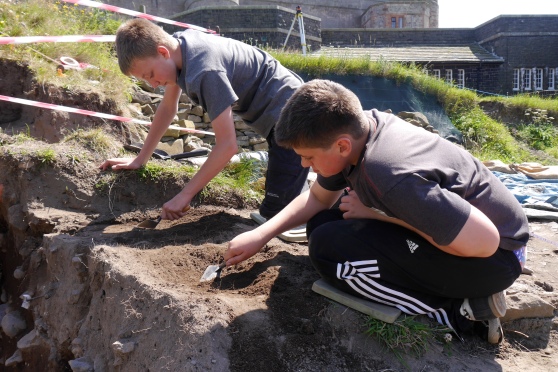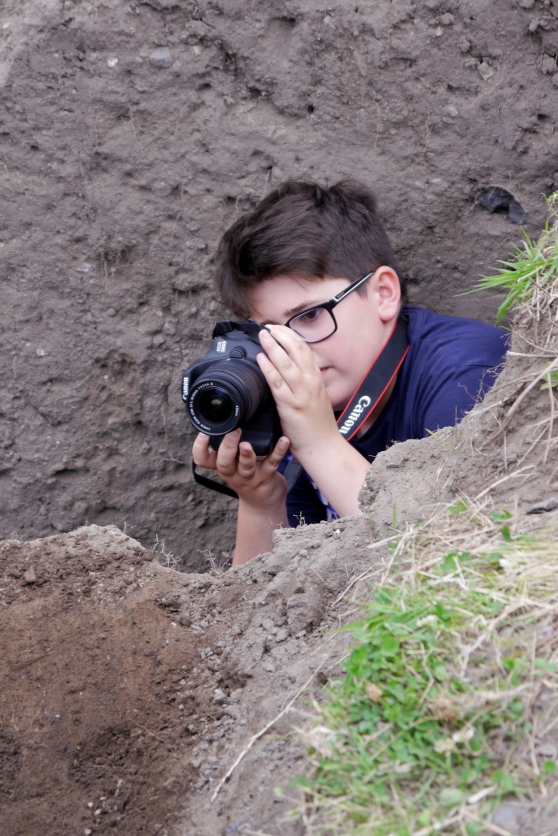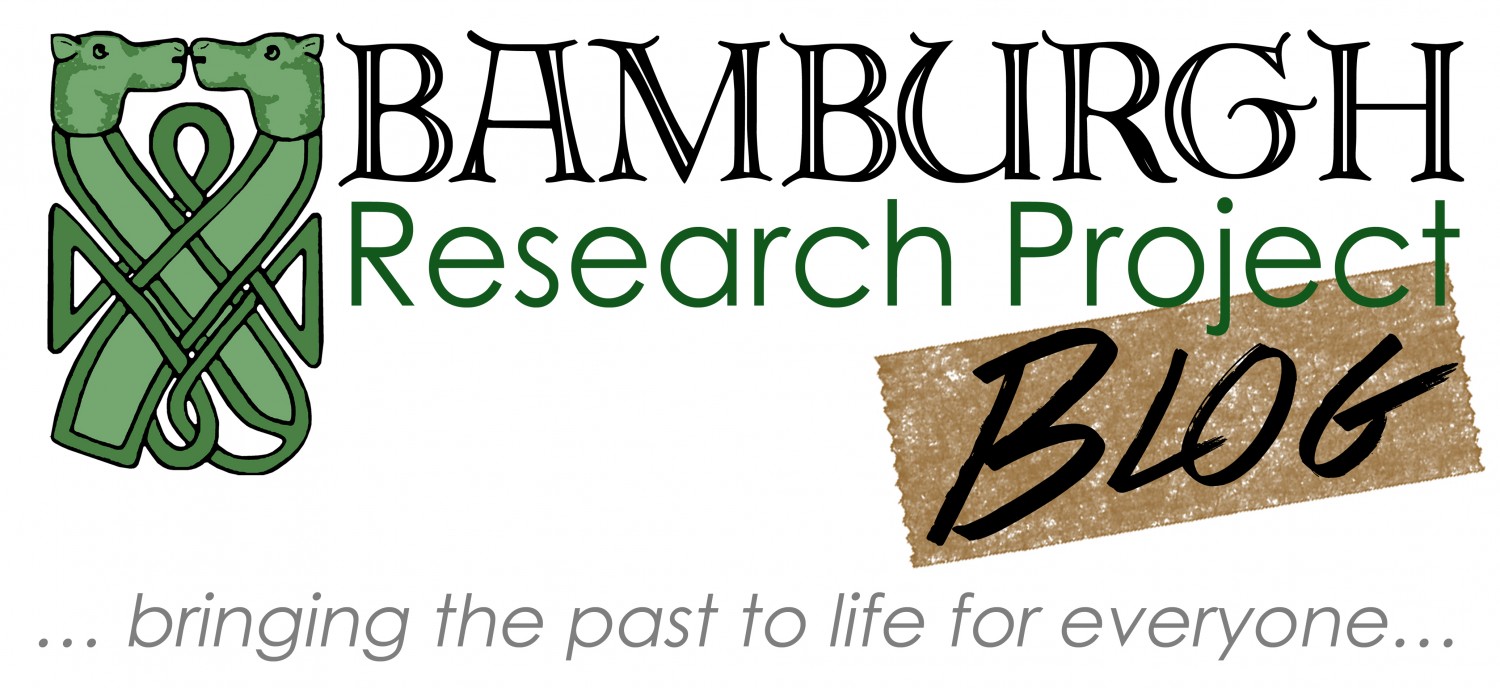Recently Brian Cosgrove and Catrina Clements of Ashington Academy brought three of their pupils, Liam Clark, Ethan Elliot and Ben Hardy up to Bamburgh Castle for Challenge Week. Although we had officially finished the dig the weekend before we were happy to host them and in fact left a little corner of the site open for them to work in.

Ben Hardy, left and Ethan Elliot, right excvating our troublesome layer
We had a plan to investigate a small block of deposit that might provide clues to help us resolve a problem with Trench 8, our re-evaluation of Brian Hope-Taylor’s Trench 1 from 1960. The deposit was a small triangle of isolated stratigraphy between Trench 8 and Trench 3. it was the continuation into Trench 3 of a confusing layer that we identified when we re-evaluated the Hope-Taylor trench. This layer that produced a limited amount of glazed pottery, now seems to reach down well into the early medieval period (see the section below). It confused us at the time of the re-evaluation in 2006 and now we have excavated much deeper in Trench 3 we have more information and it appears to extend from the 12th to the 9th centuries. As such it spans far too large a period of time for a single phase of activity and must surely represent a series of layers that we are failing to differentiate between. Elswhere in Trench 3 we have clearly different events and structures from this 300 year period. That fact that it is up to 0.4m thick is a further clue that we are missing changes that are simply very hard to see.

The digitised east facing section of Trench 8 as re-recorded in 2006. Layers 806 and 820 are part of a known series of deep midden deposits that date from the 13th centuy to the 15th century. Directly beneath is the probalematic layer, 825, that extends in section all the way to a series of layers and features that we can now date. Thin layers 828 and 863, along with the large post-hole 835 are all provisionally dated to the 9th century. The cobble feature 827 is likely to be even earlier and 8th century.
Excavation within Trench 3 has also revealed that the stratigraphic layers get deeper to the south and west and that near Trench 8 the accumulation of deposits over time was slower and shallower. As we are currently writing up Trench 8 for publication it would be very useful to be able to demonstrate if this deep deposit really did comprise more than one stratigraphic layer. So we decided that we would excavate a sample of the surviving deposit in three successive units, in a verticla sequence, separating the finds and taking a sub-samples for flotation from each. We hoped that we just might be able to see changes in the finds or identify material we could date from each unit, as a test of our idea.

Liam Clark helping out with recording
Brian and Catrina and their small team helped to excavate the layer in its units, take the samples and for good measure we processed one on site with them as well. As normal we identified and collected the finds as we dug, sieved all the deposit through a 6mm grid and 3D located the one small find, a piece of lead. We were not able to differentiate layers in plan as we dug them any better than we were in the section. Animal bone was common throughout the three units, but the only pottery sherds came from the upper one. Interesting, but far too limited evidence to form any conclusions yet. We will further analyse the finds and samples over the next few weeks, but may need to date each unit through radiocarbon assay to stand a chance of coming up with solid proof.
